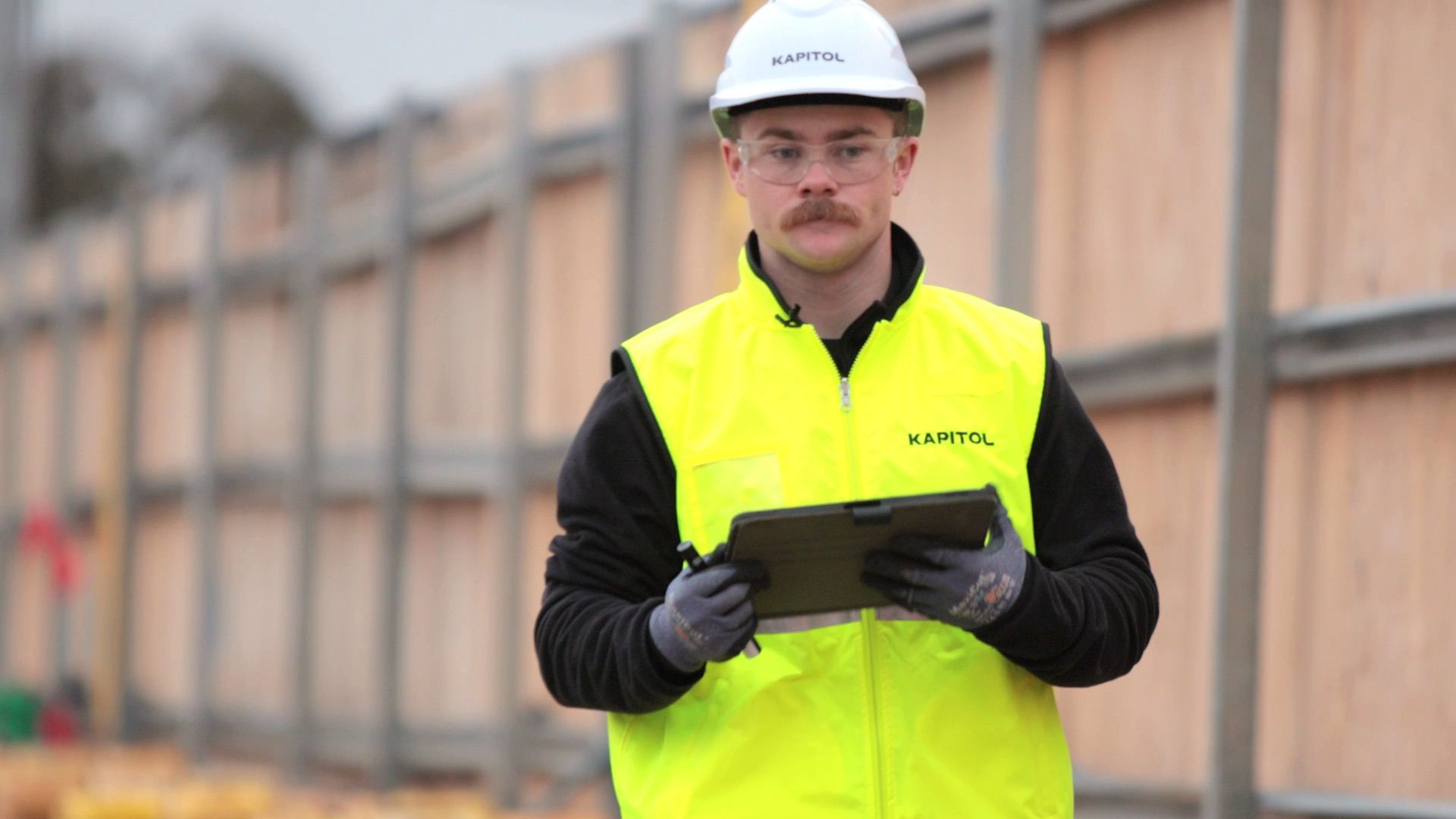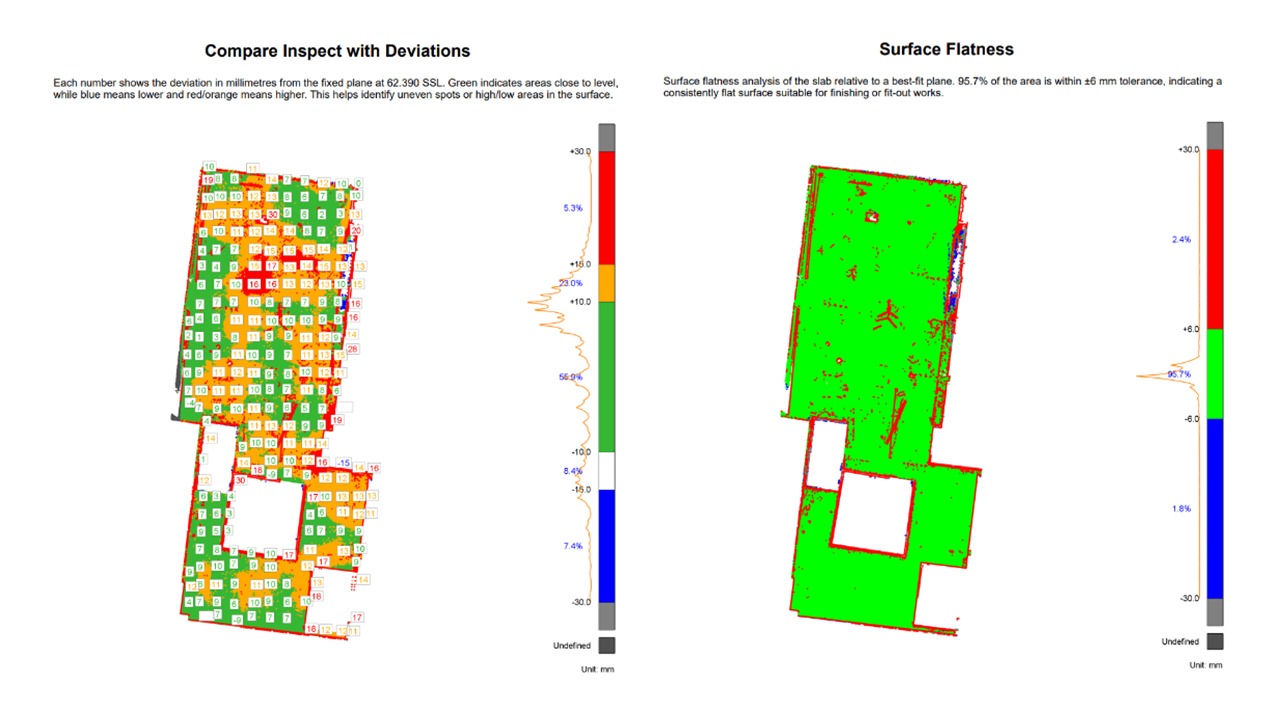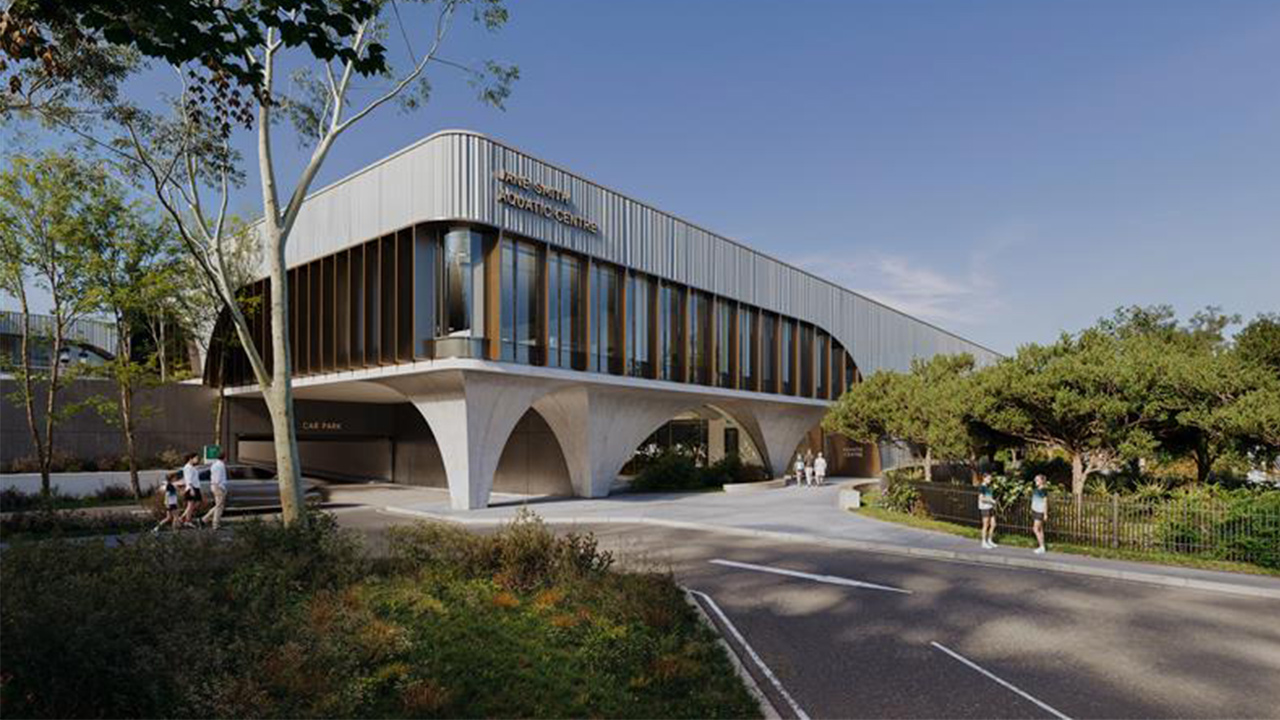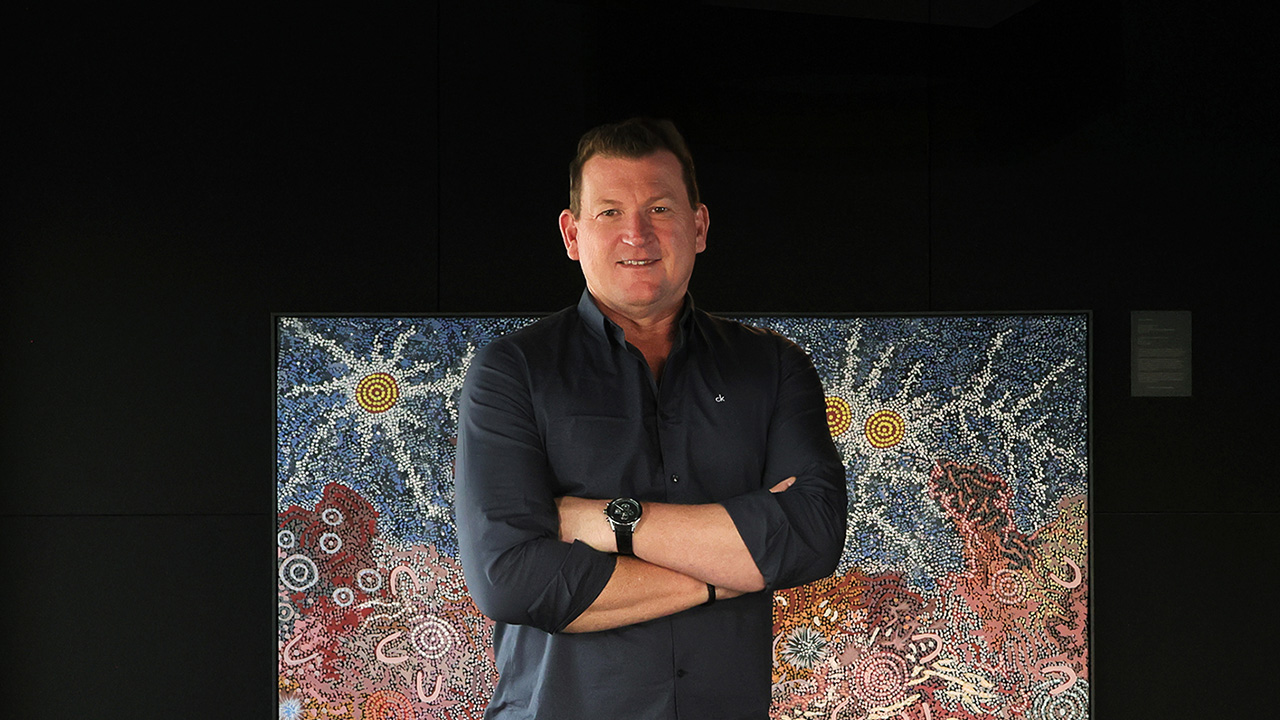.png?lang=en-US&ext=.png)
Share this story
Here at Kapitol, we're constantly looking for ways to innovate and push the boundaries of construction. That's why we're excited to showcase how our very own Scanning Technician, Connor Buckle, is transforming the way we approach projects like Assemble's Coburg development in Melbourne.
Meet Connor Buckle – Kapitol's Scanning Technician helping transform construction, one high-resolution scan at a time. His expertise lies in harnessing the power of cutting-edge laser-scanning technology, a game-changer for efficiency and accuracy in the construction industry.

Traditionally, measuring a slab’s flatness and parameters was a manual process, relying on hundreds of survey points painstakingly recorded across the site. Think of engineers meticulously marking out grids and taking individual measurements – a time-consuming and potentially error-prone undertaking. This method, while fundamental, presented limitations in terms of speed, comprehensive data capture, and the ability to quickly identify subtle deviations.
We’re now able to create a comprehensive plan in a fraction of the time, using the latest laser-scanning technology wielded by Connor. Imagine a device that can capture millions of data points in under two minutes, creating a precise 3D “point cloud” of the existing conditions. This rapid data acquisition allows us to move forward with analysis and planning at an unprecedented pace.
.jpg)
We recently caught up with Connor as he expertly scanned our Assemble Coburg site, a process that not only saved significant time but also delivered remarkably accurate results. For a project of this scale and complexity, the ability to quickly and comprehensively assess the as-built environment is invaluable. Connor explained how this technology allows us to generate detailed reports on crucial aspects like slab flatness, levelness, and even subtle slopes – information that would have taken days to gather manually.
Beyond slab analysis, the applications of laser scanning are vast. Connor highlighted how the resulting point clouds can be compared against Building Information Models (BIM). While BIM models represent the intended design, the laser scans provide an accurate picture of the actual construction. This allows us to identify any discrepancies early on, facilitating proactive problem-solving and ensuring that the final build aligns perfectly with the design intent. In a city like Melbourne, where precision is paramount in our evolving urban landscape, this level of detail is critical.

Furthermore, laser scanning plays a crucial role in structural assessment. Connor shared an example of scanning walls to ensure structural integrity and identify any leaning caused by nearby construction activities – a relevant consideration in our dynamic city environment where developments often occur in close proximity. This proactive approach helps us ensure the safety and longevity of our buildings.
This is genuine progress, enhancing both efficiency and precision across all of our projects. The integration of laser scanning into our workflow at Kapitol, spearheaded by experts like Connor, underscores our commitment to adopting innovative solutions that drive better outcomes for our clients and the community here in Melbourne. By embracing technologies like laser scanning, we're not just building structures; we're building a more efficient, accurate, and ultimately better future for construction.
Latest News

Reducing Construction Risk with VDC
Discover how VDC transforms construction—reducing risk, cutting rework, and saving time. Insights from Kapitol, Neoscape & Architectus

Introducing Kapitol’s Five-Part Series About Productivity in Construction
At Kapitol, productivity is a key issue that informs our work, culture, and commitment to innovation.

I Am Kapitol: Head of Health and Safety, David Spackman
David Spackman recently joined Kapitol as Head of Health and Safety, a critical role that aligns directly with our vision to transform the construction industry
